
How to Use LEISURE BATTERY: Examples, Pinouts, and Specs
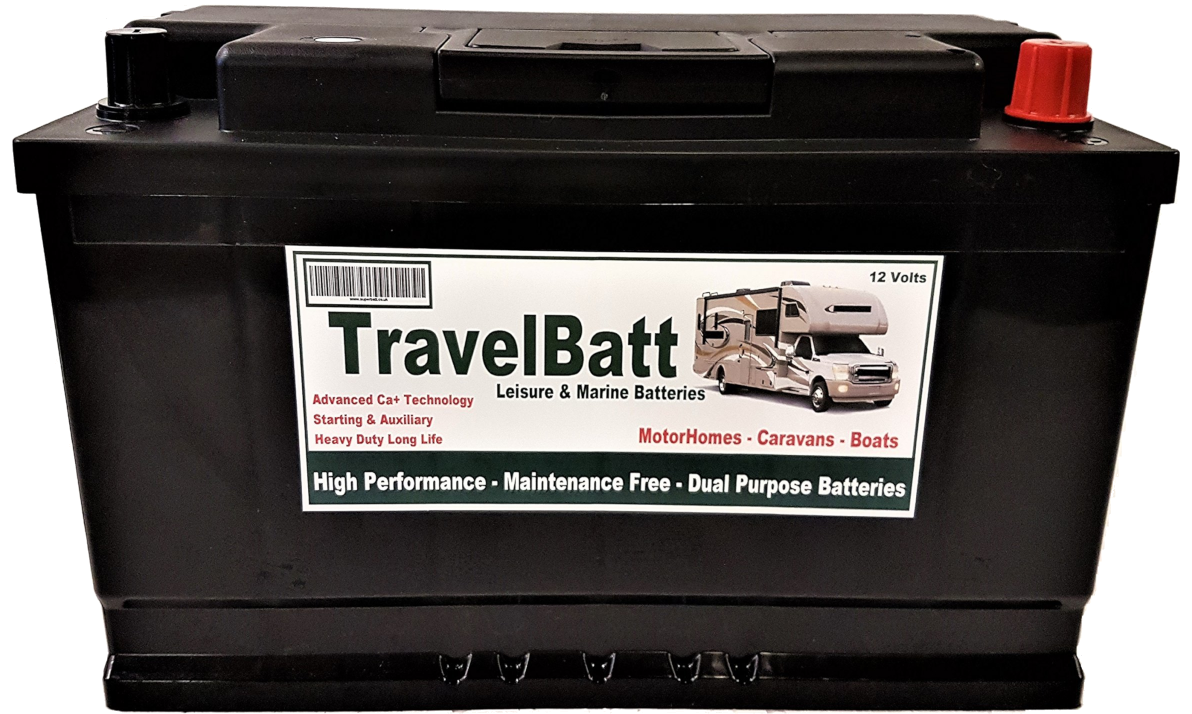
 Design with LEISURE BATTERY in Cirkit Designer
Design with LEISURE BATTERY in Cirkit DesignerIntroduction
A leisure battery is a type of rechargeable battery designed to provide power for recreational vehicles (RVs), boats, and other off-grid applications. Unlike starter batteries used in vehicles, which deliver short bursts of high current to start an engine, leisure batteries are optimized for deep cycling. This means they can be repeatedly discharged and recharged without significant damage, making them ideal for powering appliances, lighting, and other electronics over extended periods.
Explore Projects Built with LEISURE BATTERY
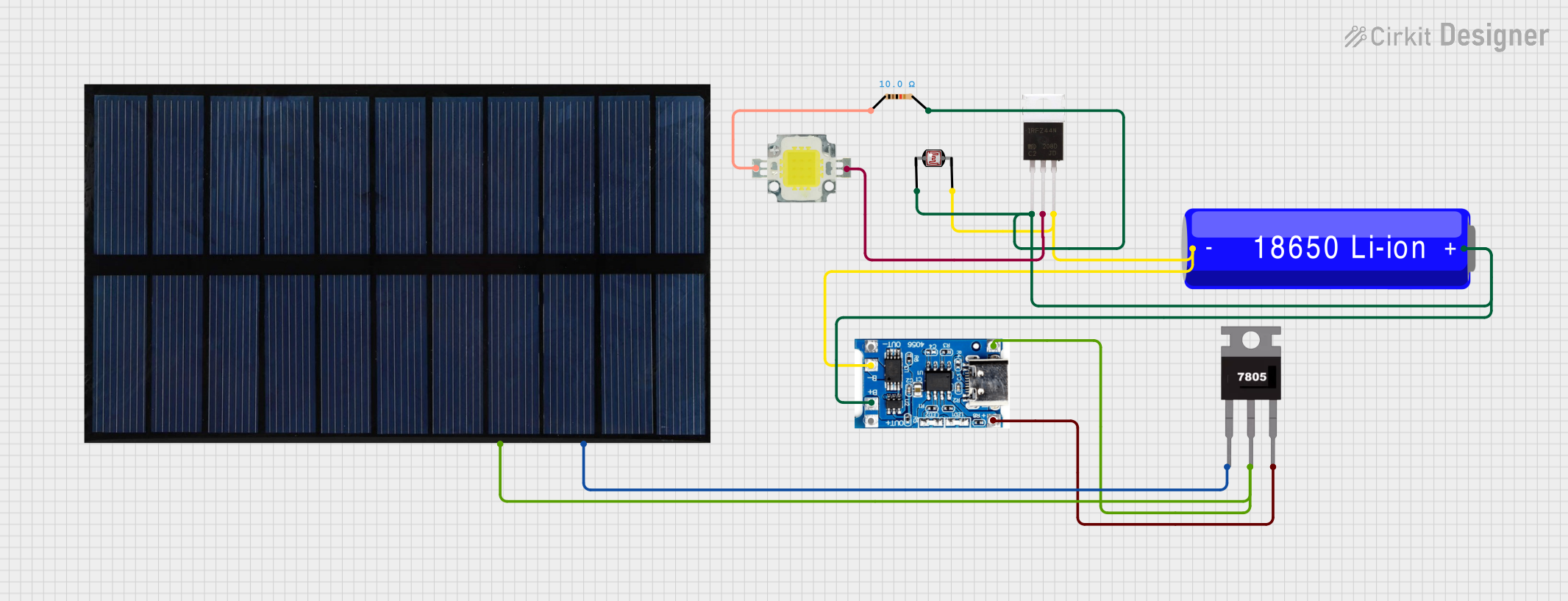
 Open Project in Cirkit Designer
Open Project in Cirkit Designer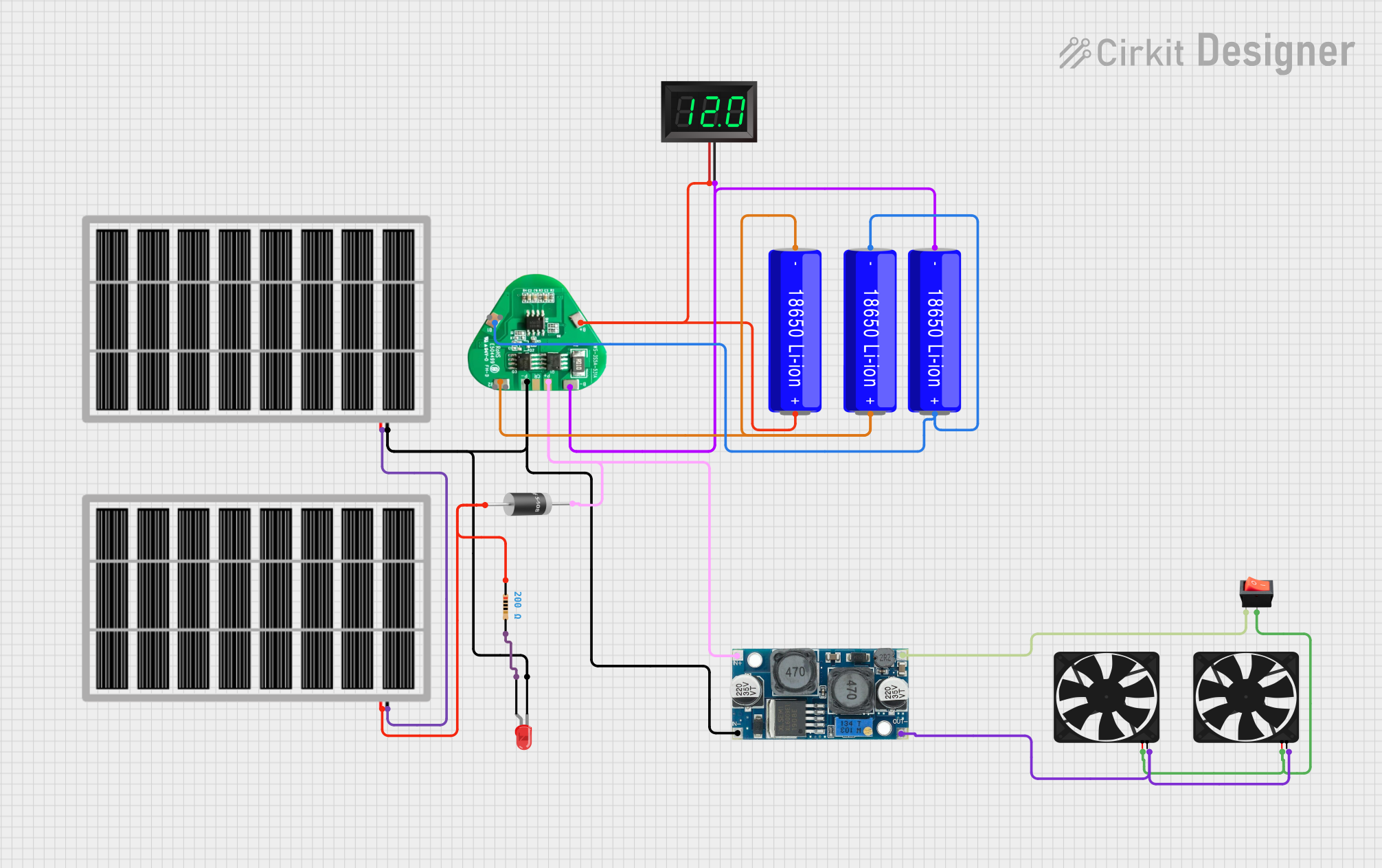
 Open Project in Cirkit Designer
Open Project in Cirkit Designer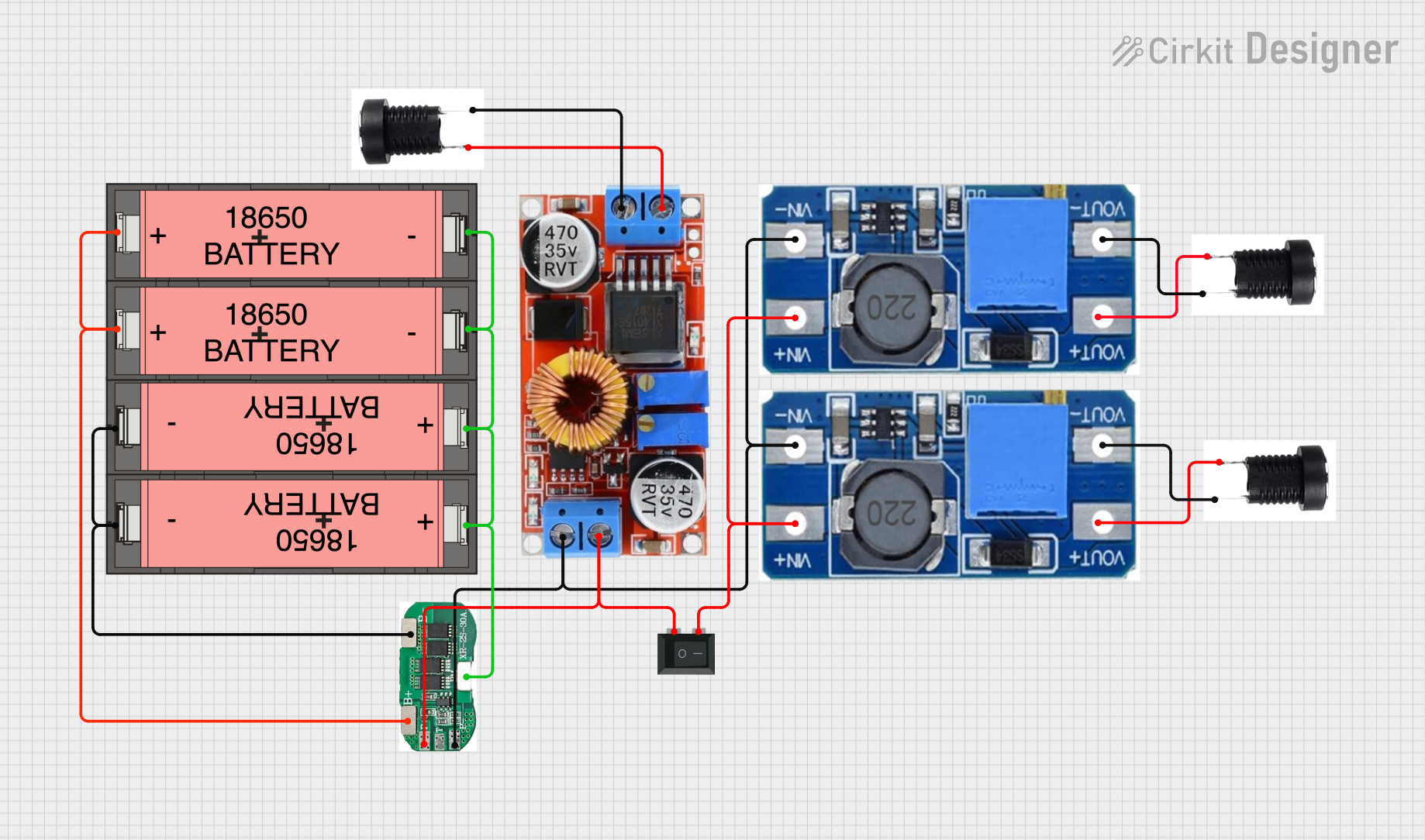
 Open Project in Cirkit Designer
Open Project in Cirkit Designer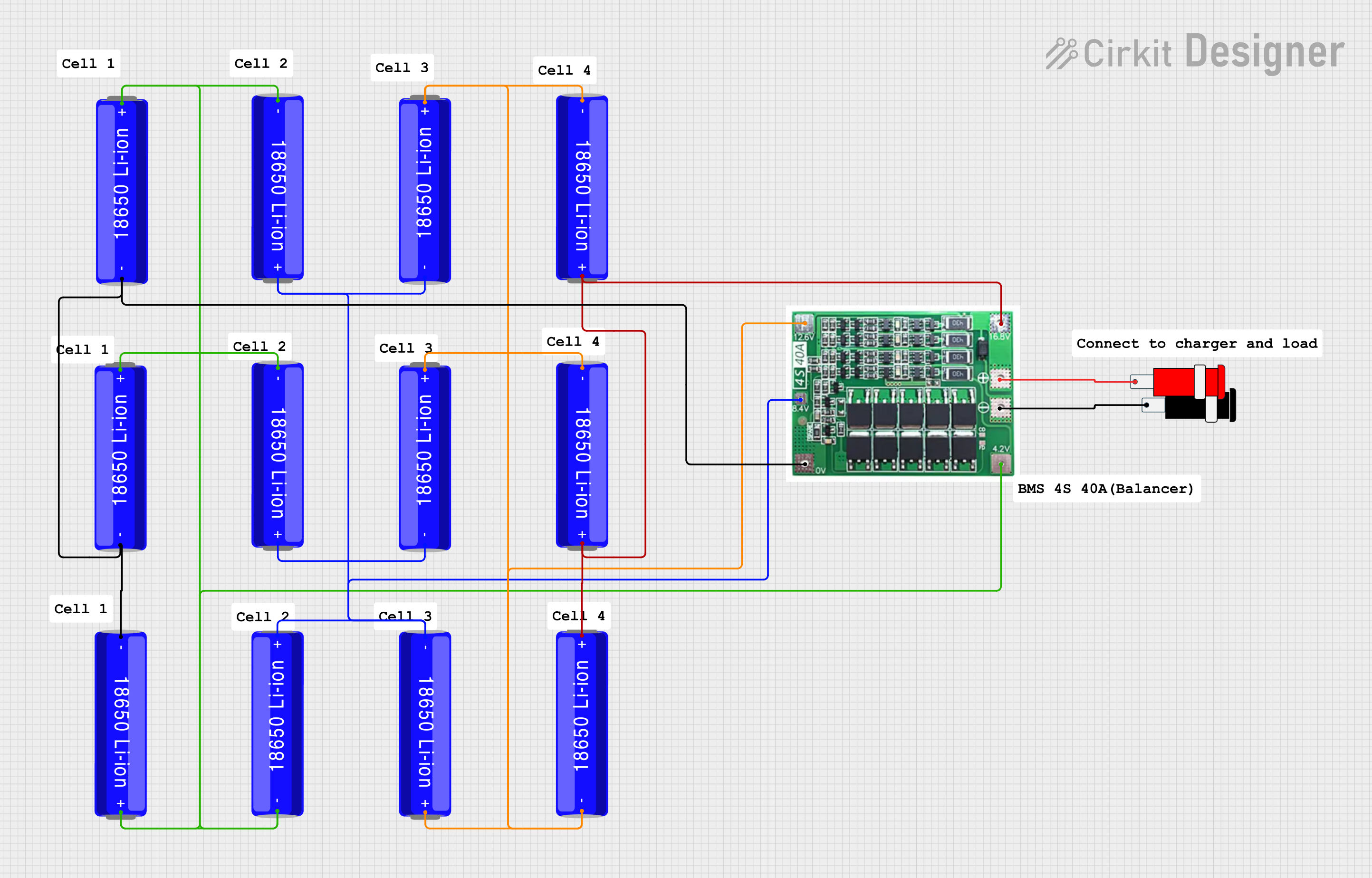
 Open Project in Cirkit Designer
Open Project in Cirkit DesignerExplore Projects Built with LEISURE BATTERY

 Open Project in Cirkit Designer
Open Project in Cirkit Designer
 Open Project in Cirkit Designer
Open Project in Cirkit Designer
 Open Project in Cirkit Designer
Open Project in Cirkit Designer
 Open Project in Cirkit Designer
Open Project in Cirkit DesignerCommon Applications and Use Cases
- Powering appliances in motorhomes, caravans, and campervans
- Providing energy for lighting and electronics on boats
- Supporting off-grid solar power systems
- Running portable refrigerators, fans, and other camping equipment
- Backup power for small off-grid setups
Technical Specifications
Below are the general technical specifications for a typical leisure battery. Note that specific values may vary depending on the manufacturer and model.
| Specification | Details |
|---|---|
| Battery Type | Lead-acid (flooded, AGM, or gel) or Lithium-ion |
| Nominal Voltage | 12V (common), 6V (less common) |
| Capacity | 50Ah to 200Ah (Ampere-hours) |
| Cycle Life | 200-1500 cycles (depending on type and depth of discharge) |
| Depth of Discharge (DoD) | 50% recommended for lead-acid, up to 80-100% for lithium-ion |
| Charging Voltage | 13.8V to 14.8V (varies by type) |
| Discharge Current | Varies; typically supports low to moderate current draw |
| Operating Temperature | -20°C to 50°C (performance may degrade at extreme temperatures) |
| Weight | 10kg to 30kg for lead-acid; lighter for lithium-ion |
| Dimensions | Varies; typically rectangular, compact for easy installation |
Terminal Configuration
Leisure batteries typically have two main terminals: positive (+) and negative (-). Some models may include additional terminals for monitoring or auxiliary connections.
| Pin/Terminal | Description |
|---|---|
| Positive (+) | Connects to the positive side of the circuit or load. |
| Negative (-) | Connects to the negative side of the circuit or ground. |
Usage Instructions
How to Use the Component in a Circuit
- Determine Power Requirements: Calculate the total power consumption of your devices in watts (W) and ensure the battery capacity (Ah) is sufficient for your needs.
- Connect the Terminals:
- Attach the positive terminal of the battery to the positive input of your load or power distribution system.
- Attach the negative terminal to the negative input or ground.
- Use a Charge Controller: If connecting the battery to a solar panel or other charging source, use a charge controller to regulate the charging process and prevent overcharging.
- Fuse Protection: Install a fuse or circuit breaker close to the battery's positive terminal to protect against short circuits.
- Monitor Battery Health: Use a battery monitor to track voltage, current, and state of charge (SoC).
Important Considerations and Best Practices
- Avoid Over-Discharging: For lead-acid batteries, avoid discharging below 50% of their capacity to extend lifespan. Lithium-ion batteries can tolerate deeper discharges but should still be monitored.
- Proper Charging: Use a charger compatible with your battery type (e.g., AGM, gel, or lithium-ion). Follow the manufacturer's recommended charging voltage and current.
- Ventilation: Ensure proper ventilation when using lead-acid batteries, as they may emit gases during charging.
- Temperature Management: Avoid exposing the battery to extreme temperatures, as this can reduce performance and lifespan.
- Regular Maintenance: For flooded lead-acid batteries, check and top up electrolyte levels with distilled water as needed.
Example: Connecting a Leisure Battery to an Arduino UNO
Leisure batteries can power an Arduino UNO for off-grid projects. Below is an example of how to connect the battery to the Arduino using a voltage regulator to step down the 12V to 5V.
Circuit Diagram
- Connect the leisure battery's positive terminal to the input of a 12V-to-5V voltage regulator.
- Connect the regulator's output to the Arduino's 5V pin.
- Connect the leisure battery's negative terminal to the Arduino's GND pin.
Sample Code
// Example code for Arduino UNO powered by a leisure battery
// This code blinks an LED connected to pin 13
void setup() {
pinMode(13, OUTPUT); // Set pin 13 as an output for the LED
}
void loop() {
digitalWrite(13, HIGH); // Turn the LED on
delay(1000); // Wait for 1 second
digitalWrite(13, LOW); // Turn the LED off
delay(1000); // Wait for 1 second
}
Troubleshooting and FAQs
Common Issues Users Might Face
Battery Drains Too Quickly:
- Cause: Excessive power draw or a faulty battery.
- Solution: Reduce the load or test the battery's capacity with a multimeter.
Battery Does Not Charge:
- Cause: Faulty charger, incorrect charging voltage, or damaged battery.
- Solution: Verify the charger is working and compatible with the battery type. Check connections.
Overheating During Use:
- Cause: High current draw or poor ventilation.
- Solution: Reduce the load and ensure proper airflow around the battery.
Corrosion on Terminals:
- Cause: Acid leakage or environmental factors.
- Solution: Clean terminals with a baking soda solution and apply terminal grease.
Solutions and Tips for Troubleshooting
- Check Voltage: Use a multimeter to measure the battery's voltage. A fully charged 12V battery should read around 12.6V to 12.8V.
- Inspect Connections: Ensure all terminals and cables are securely connected and free of corrosion.
- Test with a Load: Connect a known load to the battery and measure how long it lasts to verify capacity.
- Replace When Necessary: If the battery fails to hold a charge or shows significant capacity loss, it may need replacement.
By following these guidelines, you can ensure optimal performance and longevity of your leisure battery in various applications.